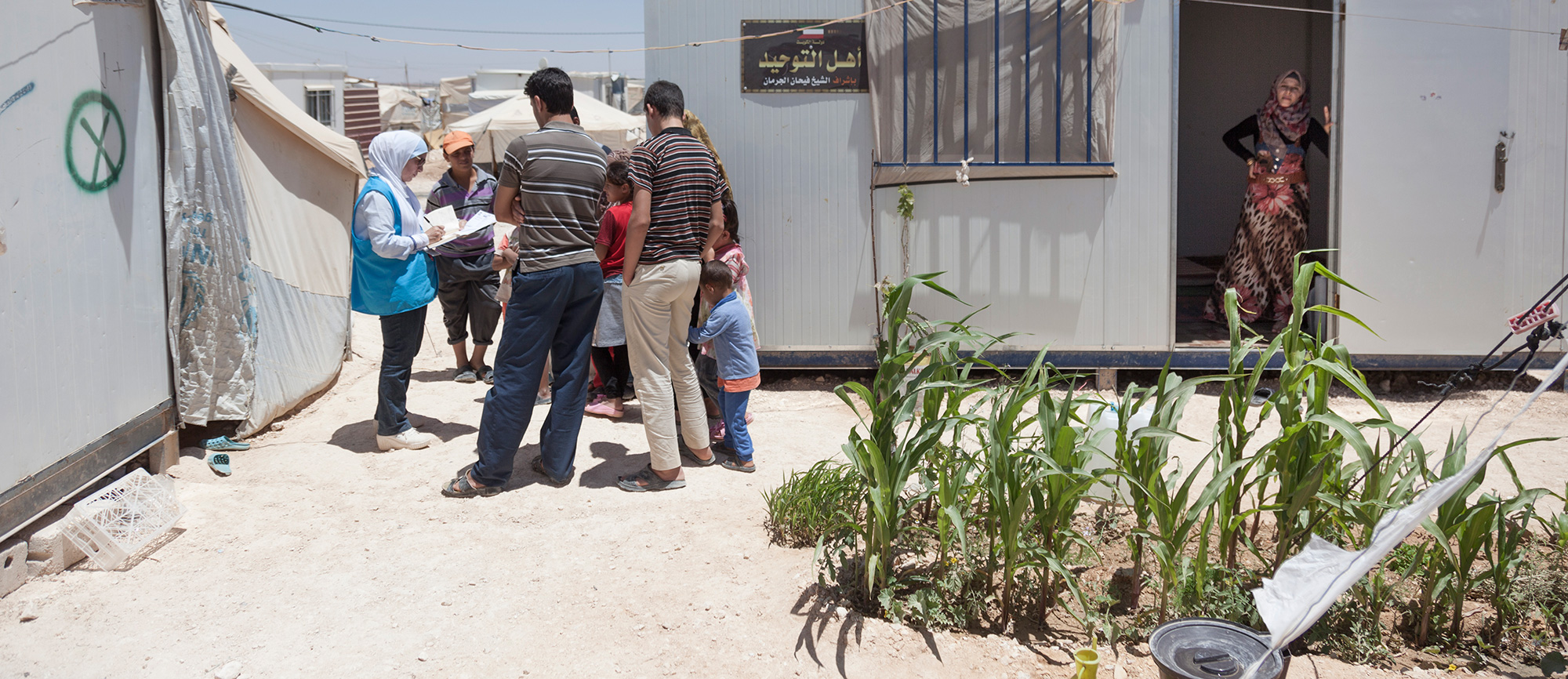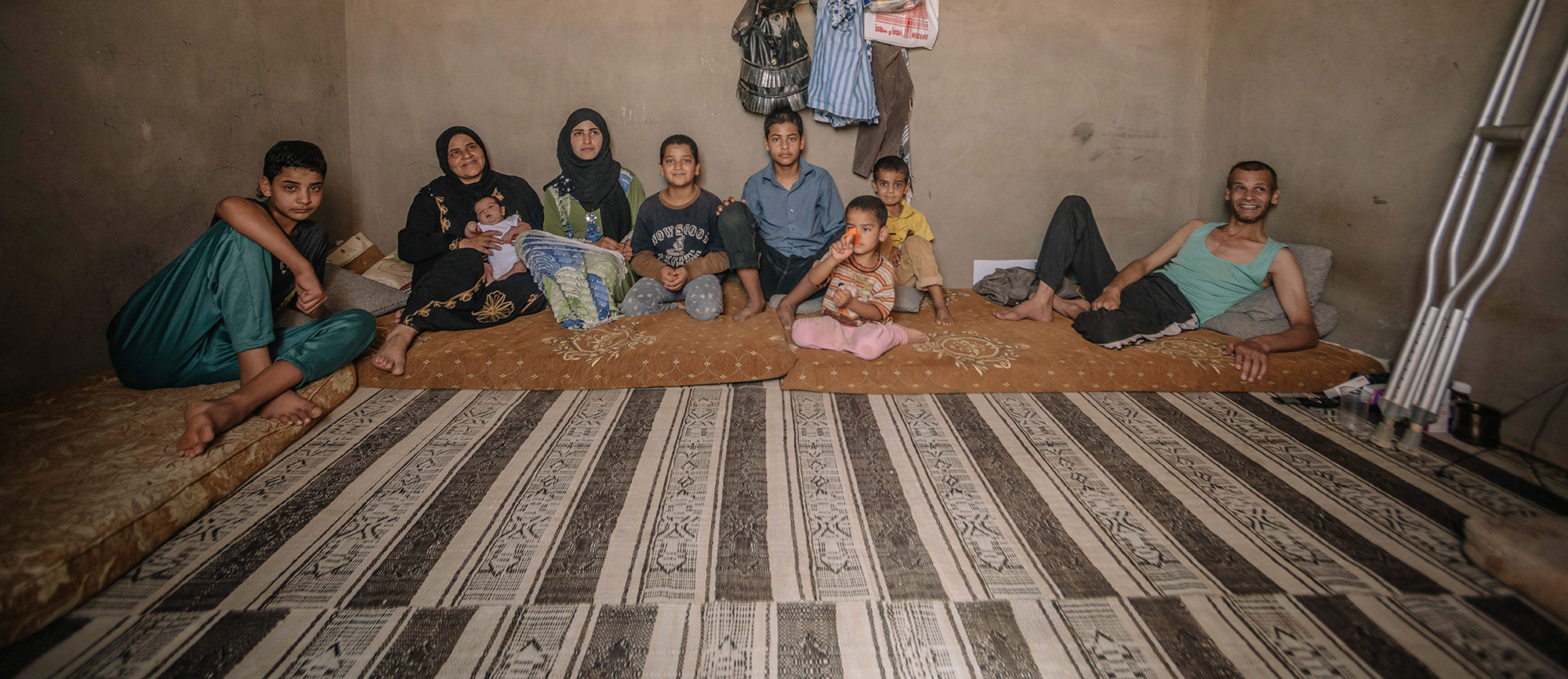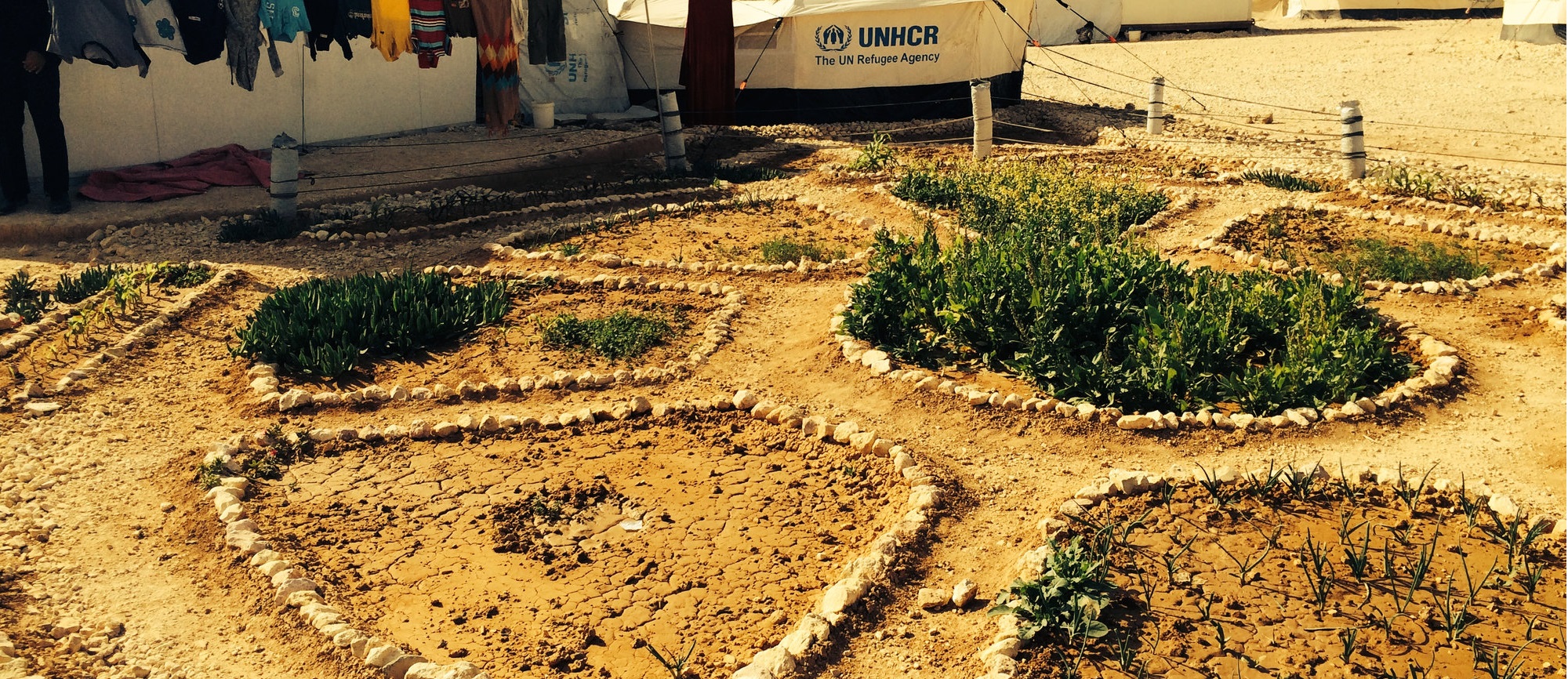1. Define challenges
Fewer resources for more refugees
The civil war in Syria is now in its fifth year. As violence rages on humanitarian aid resources are dwindling, and now more than ever, donors want to see their contributions having the greatest impact possible, to reach those refugees who need them most. Currently, around 480,000 of the 600,000 Syrian refugees in Jordan live outside of camps in urban settings, interspersed among locals and other permanent residents. With only limited access to legal, stable, and gainful employment, many Syrians in Jordan have gradually depleted their funds, leaving them reliant on assistance. According to humanitarian aid agencies, approximately four-fifths of urban refugees – or 410,000 individuals – are currently living below the poverty line.
Improving their situation requires a prioritized, targeted aid approach that brings assistance to the most vulnerable refugees. Until recently, however, humanitarian agencies working in Jordan had no shared definition of what it meant to be vulnerable. As a result, data collected by the different organization was often incomparable, and there were no shared tools with which to measure or track refugee vulnerability across time.
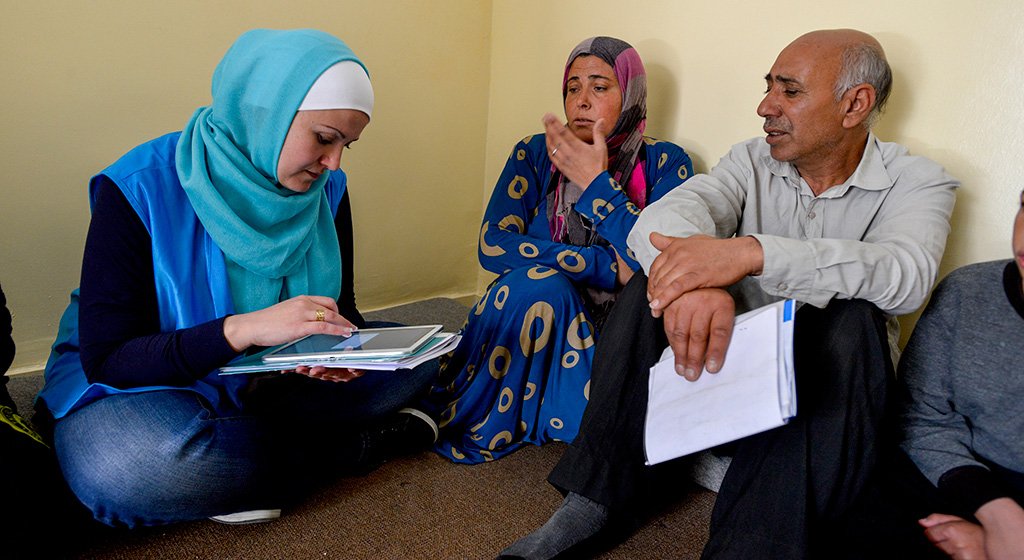
Tamara Bakez is a UNHCR Senior Field Assistant in Amman, Jordan. Tamara conducts home visists and follow-up assessments with refugee families. Here Tamara talks with Ahmed and Saadah in their empty family apartment on the outskirts of Amman.
© UNHCR/Sebastian Rich
2. Identify solutions
Getting help to those who need it most
In January 2014, an inter-agency steering committee was set up, with representatives from five UN agencies, five INGOs and two donors. Its mission was to provide the tools necessary for a more effective targeting of assistance. First on the list was agreeing on a definition of vulnerability. This was then used in developing models with which to measure and track vulnerability across time. They called the result the Vulnerability Assessment Framework (VAF).
Unlike previous approaches, VAF does not treat vulnerability as a single absolute. Instead, it defines the concept in terms of what a given person is vulnerable to, taking different sectors – such as lack of education, lack of documentation, or health liabilities – into account. Based on the application of these vulnerability indicators, VAF facilitates a comprehensive analysis of Syrian refugees’ situations.

3. Test solutions
Understanding vulnerability better through talking with Syrian refugees
VAF was developed over the course of 18 months. The first step in this process was answering the question of what it actually means to be vulnerable. There are many ways to be vulnerable, a series of workshops and consultations with different sectors in early 2014 revealed. Capturing vulnerability therefore requires taking a set of vulnerability indicators into account, which were agreed upon during the course of these meetings, and used to draft a first version of the ‘VAF Questionnaire’.
Because reality is often more complex than theory, different groups of Syrians were next invited to take part in focus group discussions to describe their own experience of vulnerability. A total of 70 focus group discussions were run. The talks not only revealed several additional aspects of vulnerability not included in the draft, but also provided important insight into what refugees in Jordan strive for. Results from both the expert workshops and the focus groups were then combined to create the final ‘VAF Questionnaire’, which has since been used as the data collection tool.
Next, the steering committee tackled the analysis of the VAF data. Vulnerability is notoriously difficult to capture, because it involves measuring a lack- a nonexistence almost. If someone is vulnerable in terms of education, that person tends to not have the possibility or only limited resources to access education. One broadly applied way to circumvent this measurement difficulty is to use expenditure as a proxy for refugee welfare. The logic behind this method is that expenditure in a given area indicates welfare in that area. In other words, expenditure generally indicates a lack of vulnerability. In consultation with the World Bank, the VAF team made use of this econometric model to design the ‘VAF Welfare Model’. This model in now being applied to the VAF dataset to assign a welfare rating to each household interviewed.
The prediction the model provides is mainly one for economic household vulnerability. As there are different forms of vulnerability, the VAF team supported the sector working groups to additionally developed sector-specific models, which use different combinations of indicators. The sector-specific models thus allow a more focused understanding of vulnerability within a specific sector. Together with the welfare model, they provide a nuanced and comprehensive analysis of vulnerability. Now it is possible to highlight geographical areas with a particularly high number of vulnerable refugees, and show how these families are vulnerable.
4. Refine solutions
Adding expert opinion
Both the VAF questionnaire and the VAF welfare model were tested before being rolled out in Jordan. This allowed for final adjustments. Next, experts from different sectors were interviewed to learn from their niche expertise. The discussions made clear that certain vulnerability indicators were likely to be underreported, and the sector models adjusted accordingly, so as to take this underreporting into account.
With these refinements, the questionnaire, welfare and sector models offer a more realistic picture of refugee vulnerability than ever before. Indeed, vulnerability or the absence thereof is not a single factor. It is determined through an interplay of different vulnerabilities. For example, a family in a very difficult financial situation may not be vulnerable with regards to education or sanitation, but be highly shelter vulnerable. As such, VAF provides a view of vulnerability from a material and basic needs perspective, while also taking refugees’ own capabilities (e.g. their respective abilities to work) into account.

5. Scale solutions
Bringing VAF to where it’s needed
Using VAF gives a snapshot of a refugee’s vulnerability at any given moment, while projecting how it is expected to develop in the near future (provided the refugee’s circumstances stay approximately the same).
Ultimately, there are no simple solutions in the complex context of helping refugees. VAF cannot solve problems such as limited funds, but it can help find the most effective use of funds. Importantly, it can also expand reach. Previously, if a smaller NGO in Jordan had the capacity to provide assistance to 2000 families, but could interview only 1000 families, the resources would be distributed amongst those 1000 families und thus not always reach those most in need.
Following VAF, that NGO can now access the VAF database, giving them access to a much wider range of information than they would have previously had. The database of information is ever growing. To date, 65,000 cases have been interviewed, representing over 200,000 urban refugees.
UNHCR is currently in discussions with NGOs regarding future collaborations. By the end of 2015, assessments will also have been carried out to measure the impact VAF has had. Meanwhile, VAF’s key application, to target assistance at the case level and ensure assistance is efficiently allocated to the most vulnerable, is already being applied by WFP, UNICEF and UNHCR.
